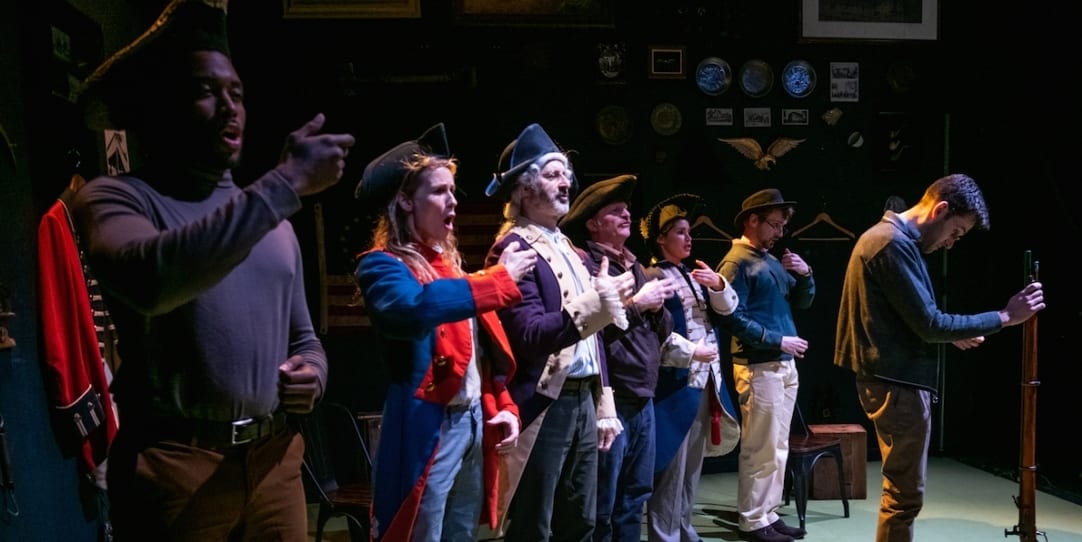Following the participants of American Civil War battle recreations, How to Load a Musket begins as a funny, fascinating view of the people behind family-friendly reenactments and tracks them as their pastime becomes a terrorist target, their beliefs in the ideals of the American experiment becoming a clash between past and present. Their all-encompassing passions become vehicles to express their personal perceptions of American history.
Playwright Talene Monahan interviewed a slew of real people deeply immersed in the reenactment scene, and the script is fashioned from those interviews. Like a live NPR segment, they tell their stories and speak directly to the audience. Versed in American history, lovingly attentive to their period outfits, the cast pulls a spectacular feat of meta, playing average people who themselves are playing parts, immersing and losing themselves in the quirky, fascinating world of recreating historical battles. They want to experience “time-gasms”, that moment in time when you are back in time, “performing this idea of America.” Some are on a slippery slope, making their own period clothes by hand, eating rancid bacon on the battlefield, studying actual historical figures and portraying them, even honoring their military ranks as though they’d been drafted. They each long to lose themselves in the distant past.
The quirky characters give way to a more serious question: who will tell the uncomfortable truths about race, sacrifice, and history? When Confederate actors unapologetically claim their past – posting their flags along the highway – are they simply reenacting, or protesting America as it is now? One reenactor says the removal of Confederate figures is being used as a scapegoat for the national sin of slavery, the North just as culpable, the victor of the war rewriting history. It’s this character who bridges the past to the present, the beliefs and resentments that still pulse throughout the country, belied by the cast-party atmosphere following reenactments with its hugs, songs, and play-acting. Some reenactors are still fighting the war they lost.
Lucien, played by David J. Cork, marvelously provides the pointed conscience of the piece from the African-American perspective, who wants to create a reenactment of armed slaves marching past the oil refineries and Domino’s pizza joints to end as a celebration of African and African-American culture, from traditional drumming to blues and hip-hop. Our current arguments about The Civil War are no longer about the past, but about how we perceive today’s America and our places in it. The playwright herself appears in her own play, questioning how this play reflects her own subjective views of history, race, and injustice.
Other notable players include Adam Chanler-Berat, who excels at the physical limitations and gravelly voice of an old man, seamlessly transitioning to a smug and awkward teen who loves his period garb, to a bonneted Martha Washington. Nicole Villamil is similarly versatile.
Scenic designer Laurence E. Moten’s visually compelling assembly of early American ephemera, from pipes and belt buckles to horseshoes and shovels, creates atmosphere in the smallest of spaces. Stacy Derosier‘s lighting design strengths appear later in the piece as the narrative moves into the present day, using long bars of light cleverly. And Jim Petty’s sound design is notable, incorporating audio of machine guns and modern warfare.

